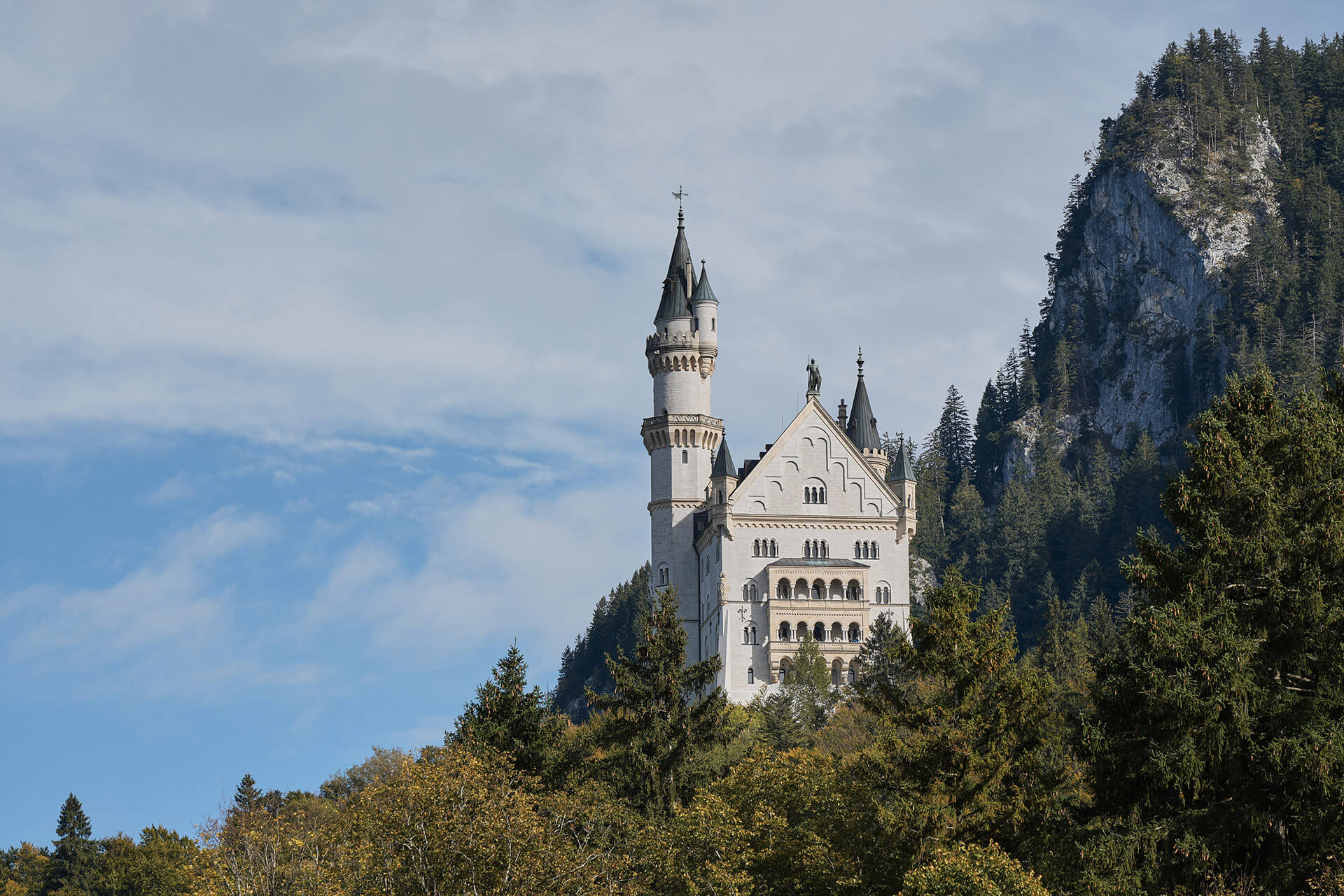Coffee. Culture. Kings.
A Thousand and One Nights
He was a dreamer, a visionary, but also a gourmet: Ludwig II had a penchant for the finesse of French cuisine and a romantically exaggerated enthusiasm for all things Oriental. In the very place where today’s powerful meet for the G7 summit, the king of yesteryear created a unique mountain refuge and an Ottoman dream world with his royal house on the Schachen. A Thousand and One Nights between edelweiss and gentian, secluded in the midst of the imposing Wetterstein mountains, not far from Ellmau.
The ochre-yellow Swiss-style house lies in solitude at the foot of the Dreitorspitze at an altitude of 1,866 meters. No cable car and no lift lead up to the Schachen, a small plateau just above the tree line. Anyone wishing to visit the elegant hunting lodge must undertake a hike of several hours. No problem for true fans – during his lifetime, however, the king preferred a one-horse carriage. The reclusive monarch always celebrated his birthday in the mountains. Far from the hustle and bustle, all the closer to his dream worlds.
From the outside, the royal mountain lodge appears modest – at least compared to his splendid constructions like Neuschwanstein, Herrenchiemsee, or Linderhof. But the Moorish Hall on the upper floor leaves every visitor in awe and embodies Ludwig’s passion for the Orient with the finesse of selected, filigree oriental accessories. Gilded walls with magnificent lamps, heavy carpets, embroidered divans, a central fountain, and colorfully stained glass windows create magical lighting effects. Here, the host celebrated nine of his birthdays, dressed in the finest Turkish costume, smoked a water pipe, and had his turban-wearing attendants serve him sweet date tartlets with mocha. Incense burners filled the air with fragrance, and large peacock feathers were waved to enhance the illusion.
Coffee: The little black delight at court
In short: Ludwig II was a monarch who liked to dine at an incomparable level, staged his lavish festivities to perfection, and ordered food from all over the world for his extraordinary banquets. Only the best was good enough for him. A fine mocha for dessert put the crown on every celebration.
Royal worlds of indulgence
This demand for quality is still upheld today by the House of Wittelsbach – with top quality, artisanal perfection, and unique taste experiences. Whether it’s beer or wine, bread, meat, cheese, or coffee: all own-brand products meet this standard. And since 1899, the coffee has tasted and smelled simply royal. Ideally served in a handcrafted, delicate beauty from the Nymphenburg Porcelain Manufactory – noble and stylish, just like the king himself. A little less haute couture, but just as refined, is the matching coffee service, signed by none other than the king himself.

The blend is what counts!
Bringing powder and water together: few other simple tasks can be turned into such a science as coffee preparation. The aroma of the beans can be extracted by pressing, steeping, boiling, or filtering. Tools include Neapolitan and moka pots, French presses, hand filters, gooseneck kettles, or machines costing as much as a small new car. But the most important factors are: good water and good coffee – freshly ground, ideally. Because a good hand-cranked grinder like Grandma used to have brings out more flavor than any trendy but poorly calibrated espresso machine.
Free thoughts, new horizons, a second home
Bach composed the “Coffee Cantata” to a humorous text about a woman addicted to coffee. In Vienna, Paris, Prague, Milan, or Munich, the artistic free spirits of the Belle Époque turned coffee houses into communication hubs, studios, and true centers of life. Balzac is said to have drunk up to 50 cups of coffee and called the black gold the fuel of creativity. Songs about coffee have also been written – by Bob Dylan and Blur, for example. Coffee accompanies us throughout the day – as a kickstart in the morning or a break in the afternoon. At home, to go, or somewhere in between.
“In the coffeehouse,” a sharp-tongued narrator once said, “sit people who want to be alone but need company to do so.” Correct – they offer space to either observe others in silence and study the colorful diversity of strangers and their behaviors, to take a break, or to actively exchange views on world affairs. Regular cafés have always been social hotspots – like pub tables, just without beer, but with the same cozy, familiar feeling of a second home.



